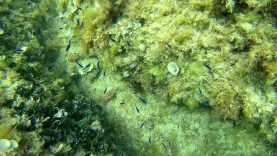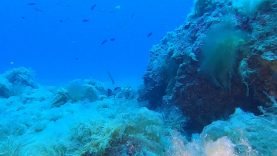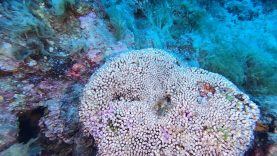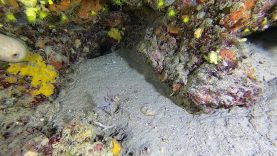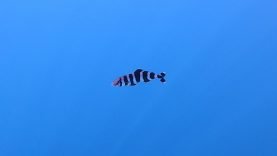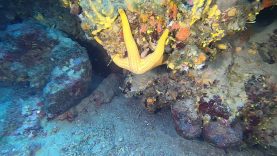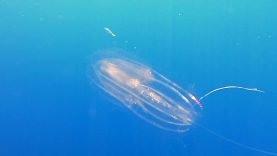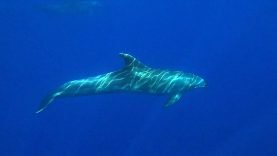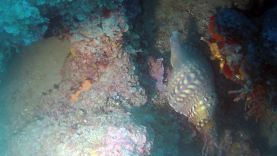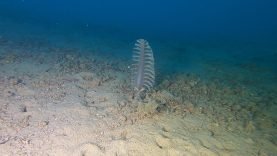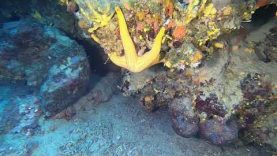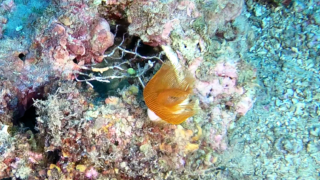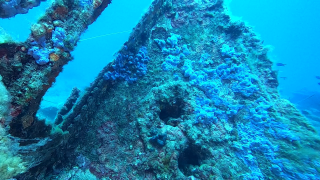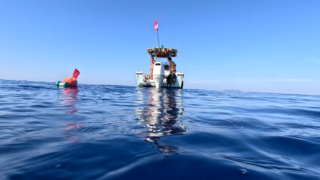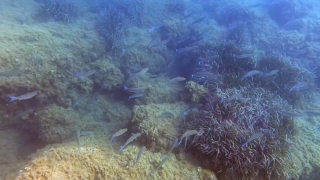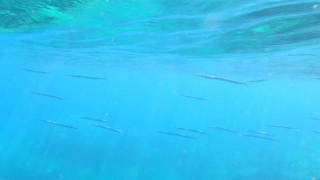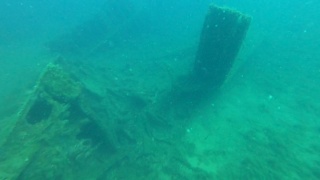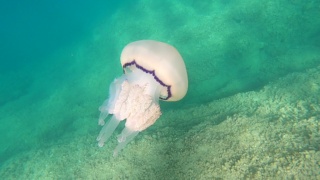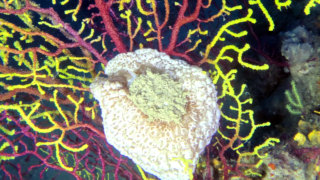Orange starfish - Hacelia attenuata
Hacelia attenuata, commonly known as an Orange starfish, is a starfish in the Ophidiasteridae family. In this collage of three videos we see it in a yellow rather than orange color. We are on three different types of seabed typical of the Mediterranean Sea: a submerged cliff around 45 meters, a rocky wall ranging from 44 to 50 meters and a rather high isolated rock that makes a jump from 39 to 49 meters deep.
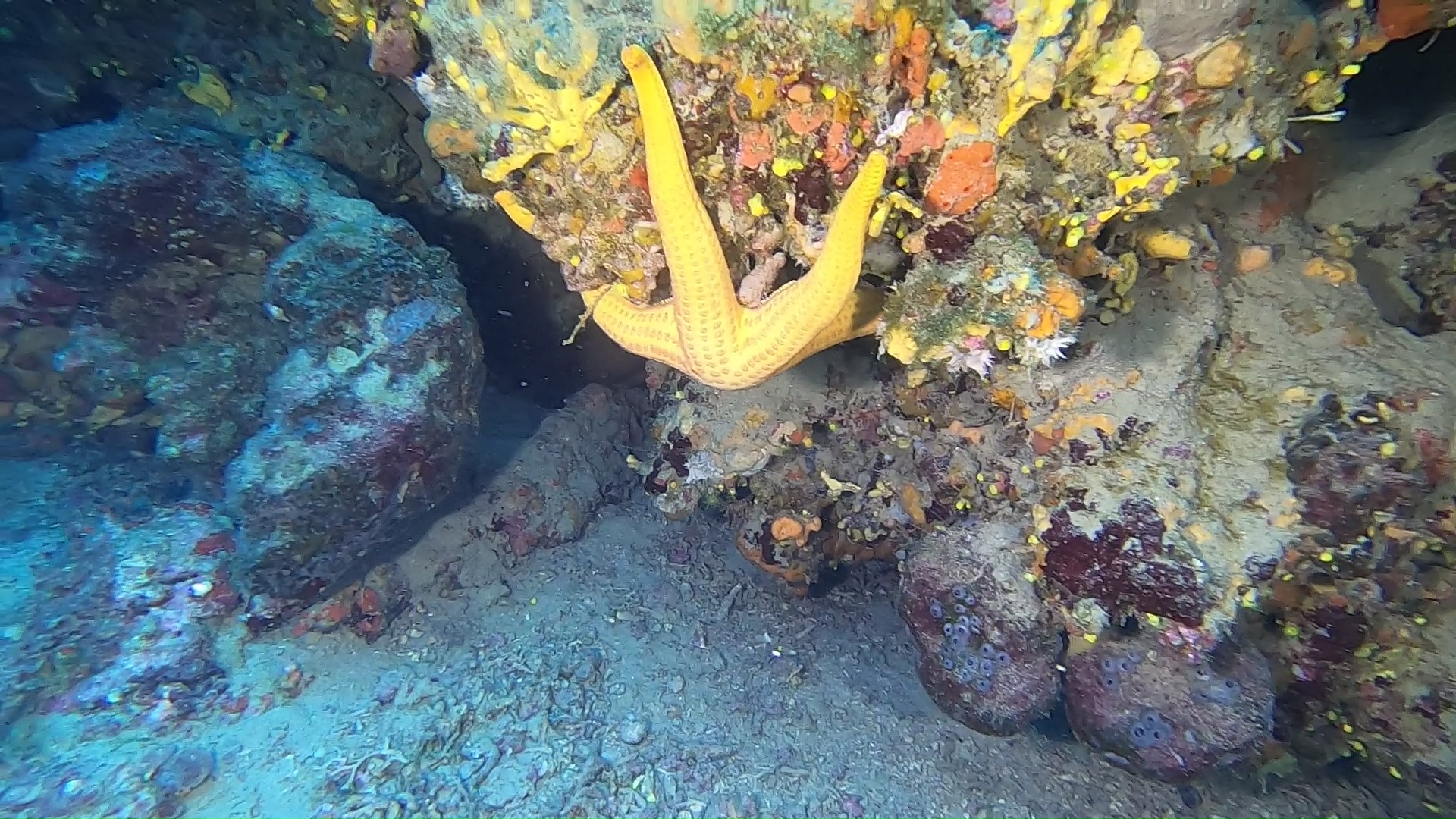
Hacelia attenuata, commonly known as an orange star, is a starfish in the Ophidiasteridae family.
Habitat and distribution Available on hard, coralligenous seabed, from 3 to 150 meters deep, normally below 10, often in caves. Being a thermophilic species it tends to be not widespread in the northern Mediterranean Sea, more frequent in the southern Adriatic Sea, in the Marmara Sea and in the Aegean Sea.
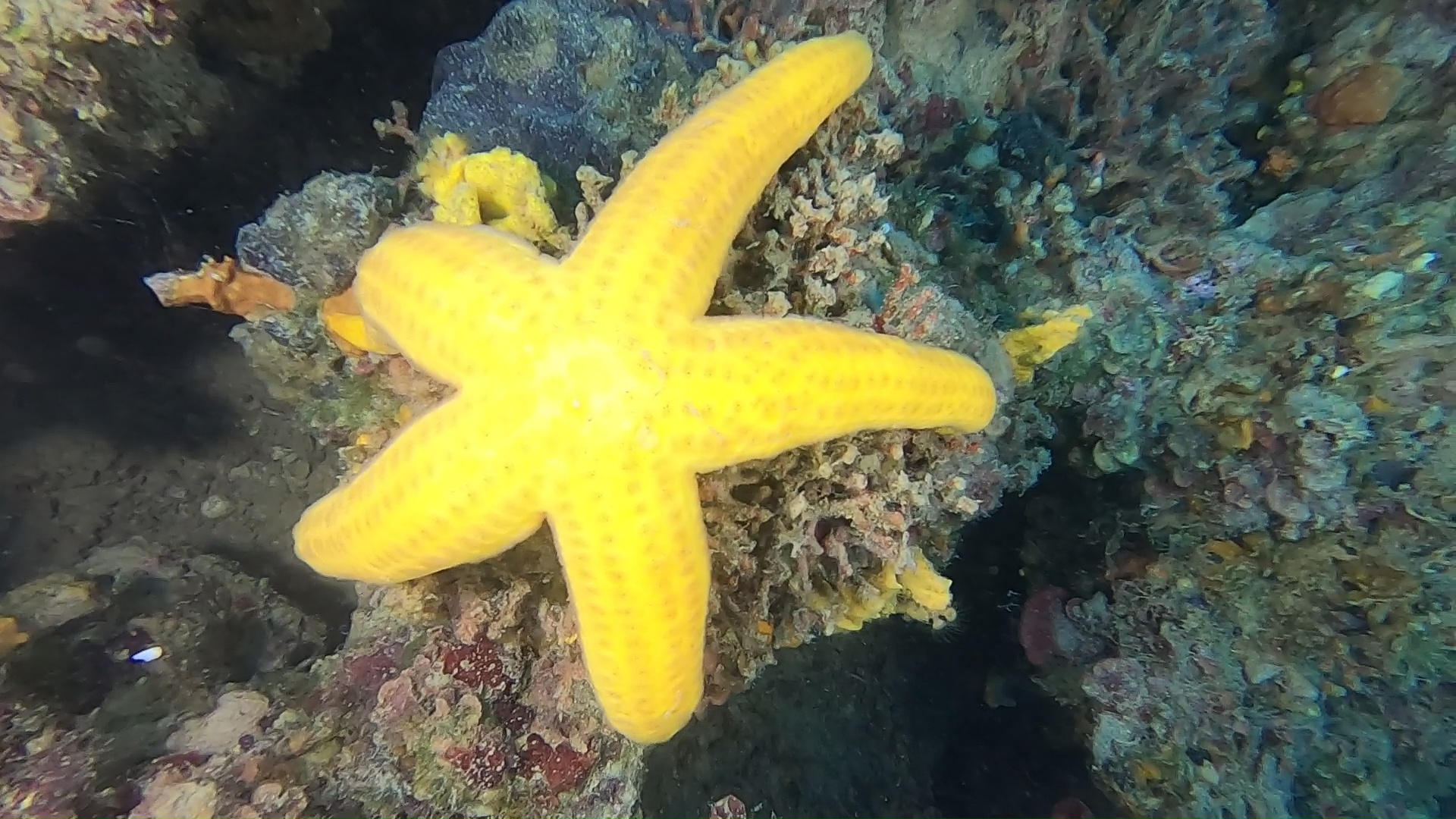
Description Long, conical arms, squat at the base, small central body, orange in color when young and gradually tending towards bright red. Up to 30 centimeters in diameter.
Behavior Thermophilic and sciaphilic species.
Supply It feeds on sponges.
https://it.wikipedia.org/wiki/Hacelia_attenuata https://en.wikipedia.org/wiki/Hacelia_attenuata
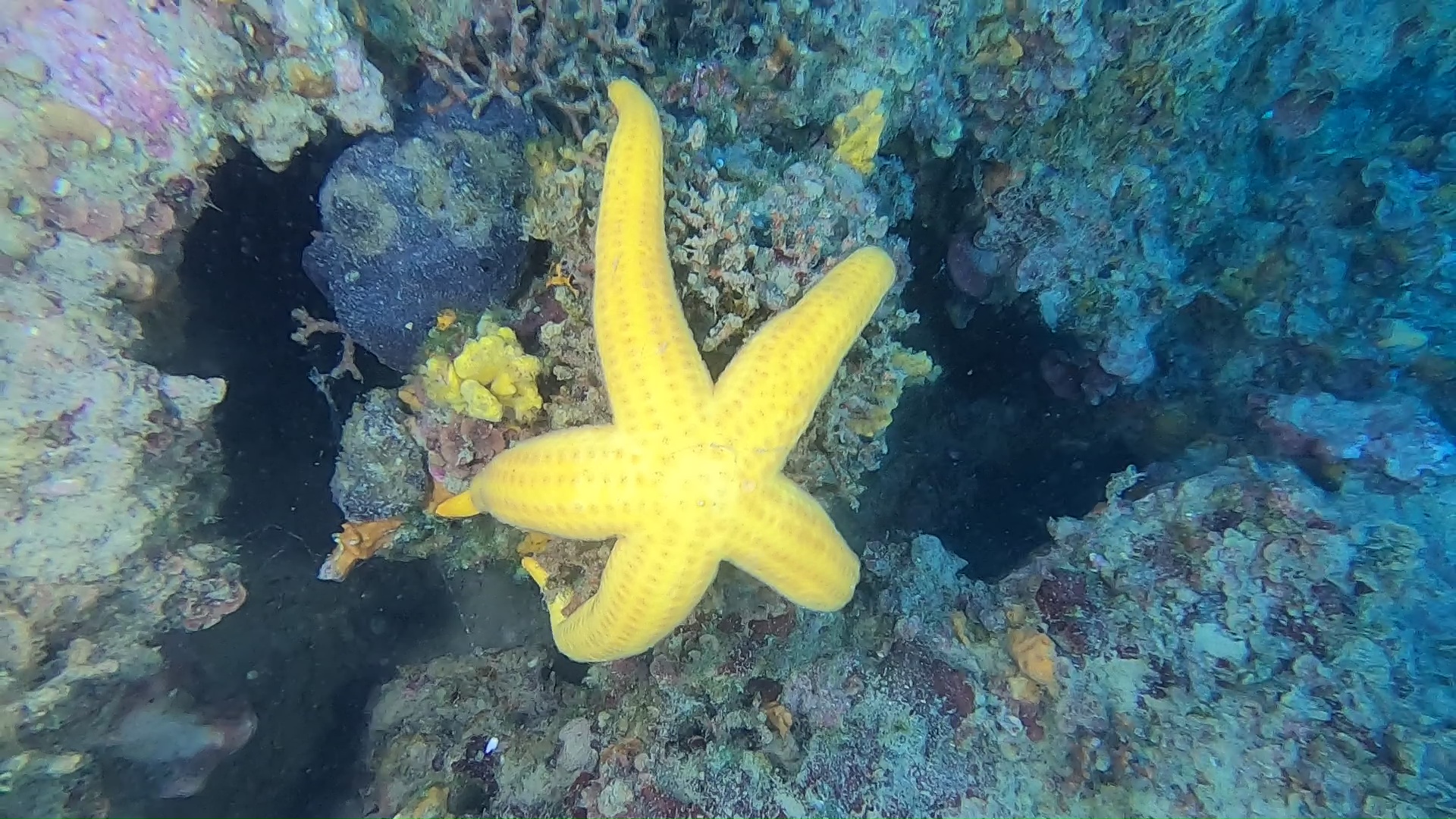
The Asteroidea class includes those echinoderms (invertebrates) called asteroids, commonly known under the name of starfish.
Physical description At a first approximation the symmetry can be defined pentamera by observing the five arms, instead it is a secondary pentamera symmetry, because it derives from an original bilateral symmetry proper, the original symmetry of all the Echinoderms. The symmetry of the Asteroidea is actually a radiant symmetry given by the presence of the madreporic tiles, an opening of the aquifer placed in an eccentric position, on the side of the animal facing upwards.
Most starfish typically have five rays, or arms, that branch off from a central disk. Many species frequently have six or more rays. Many Asteroid groups, such as Solasteridae, have between 10 and 15 arms, while other species, such as the Antarctic Labidiaster annulatus, can have up to 50. It is not uncommon for species that normally have 5 rays to present more for developmental defects. .
Starfish should not be confused with so-called serpentine stars, which at first glance are similar to Asteroidea, but actually belong to the Ophiuroidea class. It is easy to distinguish an Asteroid from an Ophiuroid based on the observation of a few external morphological characters:
- shape of the arms: rather squat in the Asteroids; narrower and longer in the Ophiuroids;
- cross section of the arms: flattened in the Asteroids; circulate in the Ophiuroides;
- central disc: in Asteroids it is in direct continuity with the arms while in Ophiuroids it is clearly detached.
https://it.wikipedia.org/wiki/Asteroidea

